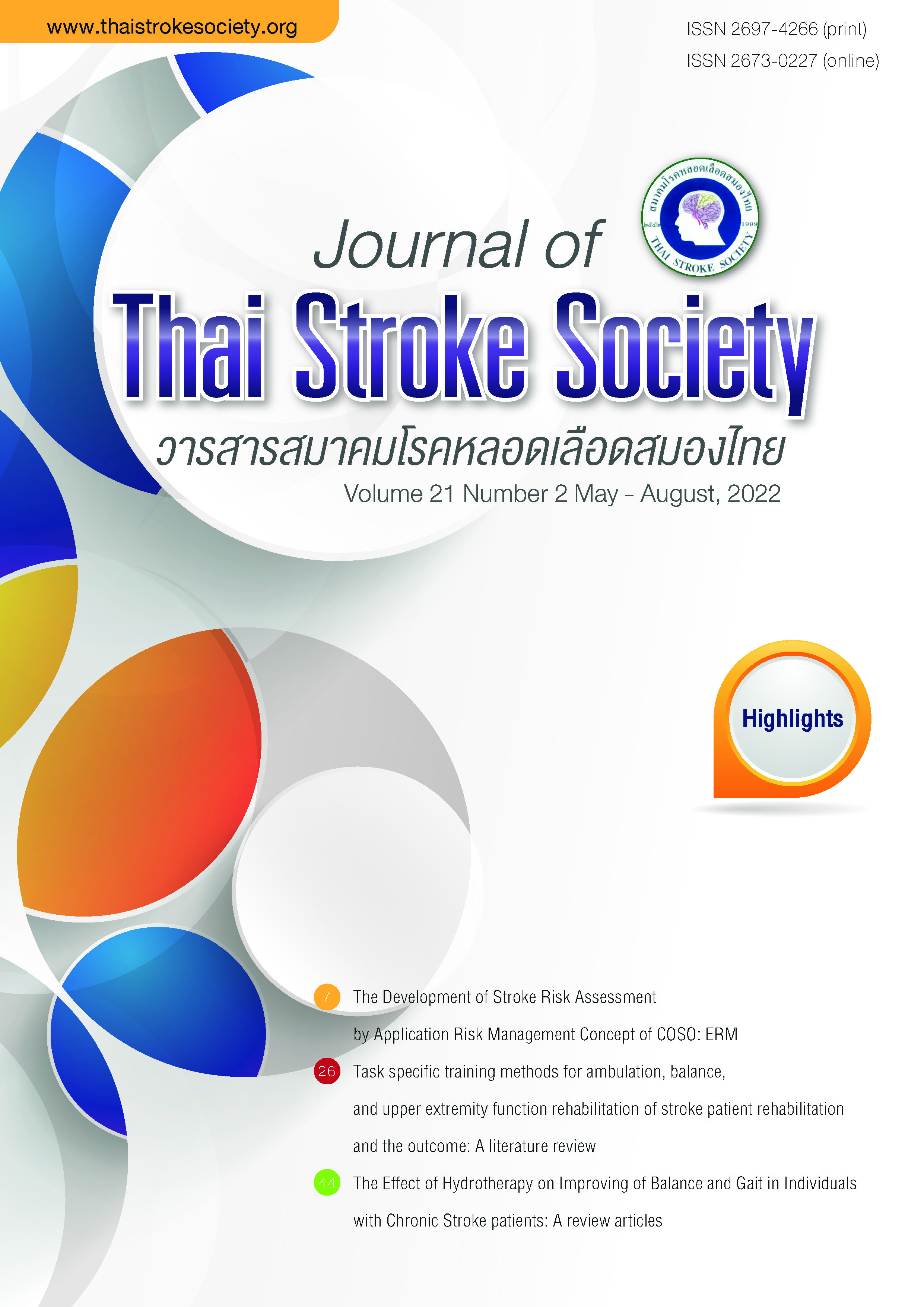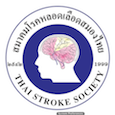Task specific training methods for ambulation, balance, and upper extremity function rehabilitation of stroke patient rehabilitation and the outcome: A literature review
Keywords:
Stroke, Task specific training, Ambulation and balance, Accelerated Skill Acquisition Program for Upper extremitiesAbstract
Task specific practice has been recommended as a treatment approach in individuals with stroke for last 20 years. The aim of this review was to discover the extent of research into task specific training and to compile a summary of the findings in order to improve the knowledge to date for the physiotherapist. The review found that task-oriented circuit training can alleviate deficit of the lower extremities caused by stroke leading to improvement in standing balance and an increase in speed and endurance during walking. In addition, the Accelerated Skill Acquisition Program (ASAP) for upper extremities, which encourages individuals with stroke to participate in specific activities can alleviate impaired movement of the hand and arm, increasing speed during reach and grasp. Task specific training for both lower and upper extremities are recommended for individuals with stroke to relearn movement with clear goals. Task progression is also needed in close collaboration with movement analysis. Finally, repetition and intensity are necessary specific to the needs of each patient as is motivation to improve functional activity in individuals with stroke
References
America Stroke Association: Heart Disease and Stroke Statistics [Internet]. Texas: American Heart Association 2018 Update [cited 2021 Oct 5]. Available from: https://www.stroke.org/en/about-stroke/stroke-risk-factors/stroke-risk-factors-you-can-control-treat-and-improve.
World Stroke Organization. World stroke day: Why stroke matters [Internet]. 2021 [cited 2021 Oct 5]. Available from: https://www.world-stroke.org/world-stroke-day-campaign/why-stroke-matters.
กองโรคไม่ติดต่อ: จำนวนและอัตราตายโรคไม่ติดต่อปี 2563 (รวม 4 โรค/ความดันโลหิตสูง/เบาหวาน/หัวใจขาดเลือด/หลอดเลือดสมอง/หลอดลมอักเสบ/ถุงลมโป่งพอง) [อินเตอร์เน็ต]. นนทบุรี: สานักโรคไม่ติดต่อ กรมควบคุมโรค กระทรวงสาธารณสุข 2563 [เข้าถึงเมื่อ 5 ต.ค 2564]. เข้าถึงได้จาก http://www.thaincd.com/2016/mission/documents-detail.php?id=13653&tid=32&gid=1-020.
Gresharm Gm, Duncan PW, Stason WB, et al. Post stroke rehabilitation clinical practice guideline. Agency for health care policy and research. 1995;95(0662)
Schaechter JD. Motor rehabilitation and brain plasticity after hemiparetic stroke. Progress in Neurobiology. 2004; 73:61–72.
Young JB, Forster A. The Bradford community stroke trial: results at six months. British Medical Journal. 1992;304(6834):1085-1089.
Kim K, Jung SI, Lee DK. Effects of task-oriented circuit training on balance and gait ability in subacute stroke patients: a randomized controlled trial. Journal of physical therapy science. 2017;29(6):989-992.
เฟื่องฟ้า ขอบคุณ, การปรับเปลี่ยนของสมองและการฝึกแบบเฉพาะเจาะจง. ใน: ชุติมา ชลายนเดชะ, โสภา พิชัยยงศ์วงศ์ดี, บรรณาธิการ. ตำราการจัดการทางกายภาพบำบัดสำหรับผู้ป่วยทางระบบประสาท. พิมพ์ครั้งที่ 1. กรุงเทพฯ: พริ้นเทอรี่; 2563. หน้า 55-84.
ชุติมา ชลายนเดชะ, ปัจจัยที่สัมพันธ์ต่อการฟื้นตัวของการทำงานหลังเป็นโรคหลอดเลือดสมอง ใน: ชุติมา ชลายนเดชะ, โสภา พิชัยยงศ์วงศ์ดี, บรรณาธิการ. ตำราการจัดการทางกายภาพบำบัดสำหรับผู้ป่วยทางระบบประสาท. พิมพ์ครั้งที่ 1. กรุงเทพฯ: พริ้นเทอรี่; 2563. หน้า 55-84.
Geyh S, Cieza A, Jan Schouten J, Dickson H, Frommelt P, Omar Z, et al. ICF core sets for stroke. J Rehabil Med. 2004; Suppl.44:135-141.
Jeon et al. Effect of task-oriented training for people with stroke: a meta-analysis focused on repetitive or circuit training. Topics in Stroke Rehabilitation 2015;22(1):34-43.
B. vahlberg et al. Short-term and long-term effects of a progressive resistance and balance exercise program in individuals with chronic stroke: a randomized controlled trial. DISABILITY AND REHABILITATION 2017;39(16):1615–1622.
Kim KK, Jung SI, Lee DK. Effects of task-oriented circuit training on balance and gait ability in subacute stroke patients: a randomized controlled trial J. Phys. Ther. Sci. 2017;29: 989–992.
Dean CM et al. Task-related circuit training improves performance of locomotor tasks in chronic stroke: a randomized, controlled pilot trial. Arch Phys Med Rehabil 2000;81(4):409-417
YR-Yang et al. Task-oriented progressive resistance strength training improves muscle strength and functional performance in individuals with stroke. Clinical Rehabilitation 2006;20: 860-870.
Outermans JC et al. Effects of a high-intensity task-oriented training on gait performance early after stroke: a pilot study. Clin Rehabil. 2010; 11:979-987.
Kim BH, Lee SM, Bae YH, et al. The effect of a task-oriented training on trunk control ability, balance, and gait of stroke patients. J Phys Ther Sci. 2012; 24:519–522.
. Pellicer MG, Lusar AC, Casanovas JM et al. Effectiveness of a multimodal exercise rehabilitation program on walking capacity and functionality after a stroke. Journal of Exercise Rehabilitation 2017;13(6):666-675.
Wist S, Clivaz J, Sattelmayer M. Muscle strengthening for hemiparesis after stroke: a meta-analysis. Ann Phys Rehabil Med. 2016;59(2):114-124.
Relationship of observed gait deviations with physical functions and walking ability in stroke patients. hirosaki med j. 2017; 67:166-178
Cabanas-Valdés R, Bagur-Calafat C, Girabent-Farrés M, Caballero-Gómez FM, du Port de Pontcharra-Serra H, German-Romero A, et al. Long-term follow-up of a randomized controlled trial on additional core stability exercises training for improving dynamic sitting balance and trunk control in stroke patients. Clin Rehabil. 2017;31(11):1492-1499.
The Effects of Trunk Exercise on Mobility, Balance and Trunk Control of Stroke Patients. J Korean Soc Phys Med, 2017;12(1): 25-33
Winstein CJ, Wolf SL. Task-oriented training to promote upper extremity. In: Stein J, Zorowitz RD, Harvey RL, Macko RF, Winstein CJ, eds. Stroke recovery and rehabilitation: New York: Demos Medical Publishing. 2009;267–290.
Tretriluxana J, Runnarong N, Tretriluxana S, Prayoonwiwat N, Vachalathiti R and Winstein C. Feasibility investigation of the Accelerated Skill Acquisition Program (ASAP): insights into reach-to-Grasp coordination of individuals with post-acute stroke.Top Stroke Rehabil. 2013;20(2):151–160.
Wolf SL, Winstein CJ. Intensive physical therapeutic approaches to stroke recovery. In: Cramer SC, Nudo RJ, editors. Brain Repair After Stroke. Cambridge: Cambridge University Press; 2010; 219–232.
AA Thant, Wanpen S et al. Effects of task-oriented training on upper extremity functional performance in patients with sub-acute stroke: a randomized controlled trial. J Phys Ther Sci. 2019; 31:82-87.
Olan Isariyapan, et al. Effects of a 2-week Home-Based Strength Training Associated with Task-Oriented Training to Upper Limb Function Activities in Patients with Chronic Stroke. Srinagarind Med J 2020; 35(4):463-469.
Sandra A et al. Physical Activity and Exercise Recommendations for Stroke Survivors A Statement for Healthcare Professionals from the American Heart Association/American Stroke Association. Stroke. 2014; 45:2532-53.
Downloads
Published
How to Cite
Issue
Section
License
Copyright (c) 2022 Journal of Thai Stroke Society

This work is licensed under a Creative Commons Attribution-NonCommercial-NoDerivatives 4.0 International License.
ข้อความภายในบทความที่ตีพิมพ์ในวารสารสมาคมโรคหลอดเลือดสมองไทยเล่มนี้ ตลอดจนความรับผิดชอบด้านเนื้อหาและการตรวจร่างบทความเป็นของผู้นิพนธ์ ไม่เกี่ยวข้องกับกองบรรณาธิการแต่อย่างใด การนำเนื้อหา ข้อความหรือข้อคิดเห็นของบทความไปเผยแพร่ ต้องได้รับอนุญาตจากกองบรรณาธิการอย่างเป็นลายลักษณ์อักษร ผลงานที่ได้รับการตีพิมพ์ในวารสารเล่มนี้ถือเป็นลิขสิทธิ์ของวารสาร





